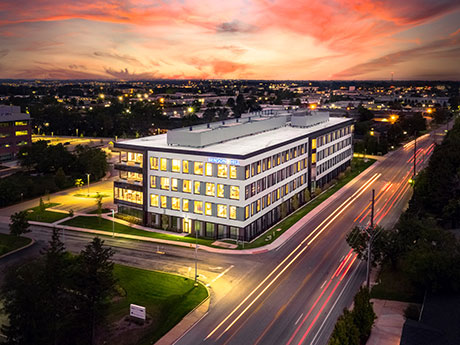By Scott Dunwoody, Cushman & Wakefield
It’s not too much of a stretch to say that St. Louis’ life sciences sector dates back to Lewis & Clark’s Corps of Discovery and all the scientific findings revealed upon their return to the city in 1806. More than two centuries later, St. Louis remains at the forefront of life sciences.
The region is a center of plant science research and a cornerstone of global agriculture technology, with institutions such as Washington University in St. Louis (WashU) and St. Louis University playing critical roles in the biotech and medical fields. These factors translate into significant economic development benefits for the region and a positive impact on the area’s commercial real estate market.
St. Louis is home to the largest concentration of plant scientist PhDs in the world. All that talent supports and drives more than 750 plant and medical science organizations across the region, including large employers such as Bayer (formerly Monsanto), Bunge, Benson Hill, IFF, Novus and Pfizer, and has led to significant investments throughout the region. What’s more, St. Louis ranks No. 14 nationally in National Institutes of Health funding, having secured more than $3.3 billion in the past five years.
In Creve Coeur, 39 North is a 600-acre ag-tech innovation district at the forefront of plant science research globally. The district is home to the Donald Danforth Plant Science Center, BRDG Park, Bayer Crop Science and many other organizations. The Donald Danforth Plant Science Center is one of the most technologically advanced bioscience facilities in the U.S. and is focused on solving some of the world’s biggest problems from drought, malnutrition and hunger to climate change and public health issues.
The ag-tech district serves more than 1,000 plant science PhDs and boasts over $2 billion in bioscience venture capital under local management. 39 North supports both early stage and mature companies, including growing firms such as Benson Hill, whose growth led to construction of its approximately 160,000-square-foot headquarters building known as EDGE@BRDG in 2020.
A few miles east in the city of St. Louis, the Cortex Innovation Community (Cortex) is a focal point of technology and life sciences sectors for both early stage and established companies. The 200-acre district is home to approximately 425 organizations, and its founding partners include WashU, the University of Missouri St. Louis, St. Louis University, BJC HealthCare and the Missouri Botanical Garden.
Cortex has experienced significant investment and growth since its inception in 2002, and the trend continues with WashU’s $616 million neuroscience, technology and innovation center set to deliver in 2023 and house 875 researchers.
Since 2010, Cortex has added over 700,000 square feet of office inventory, about 17.3 percent of the region’s overall office development during that period. Historically, the district has maintained low vacancy rates, although recent tenant moves may push the direct office vacancy rate above 10 percent in the first quarter of this year. While this figure is higher than in previous years, Cortex is still attracting tenants, with life sciences company Vir Biotechnology recently opening a new 59,000-square-foot office within Cortex.
The strength of Cortex and the demand for life sciences space is playing an important role in adaptive reuse and redevelopment in the Central West End and Midtown areas. One example involves BioSTL, a partnership of WashU, BJC HealthCare and the St. Louis Life Sciences Project. BioSTL calls Cortex home and supports the life sciences industry and startups across the innovation and entrepreneurship ecosystem.
BioSTL and its BioGenerator Labs are located at 4340 Duncan Avenue, a 1930s-era building that was originally a printing press for the St. Louis Post-Dispatch. After WashU’s $44 million redevelopment of the building, the 80,000-square-foot property includes state-of-the-art office, lab and modular spaces to support startups with affordable, functional space to grow.
Another example just a few blocks down Forest Park Avenue in Midtown, City Foundry has undergone a complete transformation from an old industrial complex in disrepair into a unique, 15-acre mixed-use redevelopment that accommodates a variety of uses and firms, including life sciences and technology companies.
The impact of the life sciences sector on the local commercial real estate landscape is certainly not limited to just 39 North and Cortex. In fact, two of the three newest office buildings in Chesterfield within the West County submarket were built for Pfizer and Bunge. Pfizer’s new location’s impact reaches far beyond St. Louis; the Chesterfield facility played a role in developing and manufacturing Pfizer-BioNTech’s COVID-19 vaccine.
For the St. Louis region, life and plant sciences are an important part of our past, present and future. The sector offers a reliable cornerstone at a time when uncertainty surrounds corporate decision-making, the office market and the broader economy. The trends and challenges that drive life sciences growth are global in nature and require clusters of talent and research and development resources to solve.
With assets like 39 North and Cortex, a concentration of PhDs, and its central, farm-belt location, St. Louis delivers all the ingredients to address those issues and continue to fuel a robust life sciences sector.
Scott Dunwoody is a director with Cushman & Wakefield. This article originally appeared in the January 2023 issue of Heartland Real Estate Business magazine.



